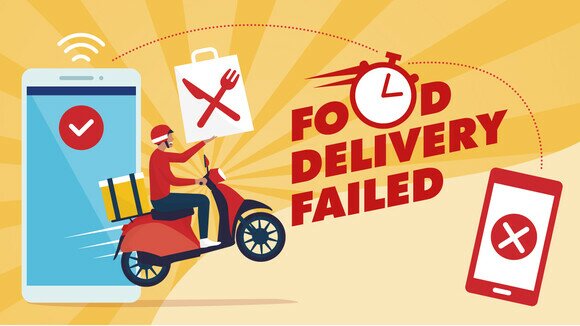Conclusions and Consumer tips
Conclusions
Consumers who opt for self-pickup service may think they can pick up their foods from the restaurants any time they want. They may not know that some food delivery platforms may have very stringent time restriction and may cancel their orders if they fail to pick up the foods within the prescribed timeframe. Therefore, food delivery platforms should highlight this term to their customers in the ordering process so that the customers can decide for the appropriate pickup time. The Council understands that food delivery platforms may have set out this term to protect suppliers from risks arising from food quality issues if the foods are left for too long. Therefore, customers are required to pick up their foods within a limited timeframe or else their orders will be canceled.
On the other hand, when consumers opt for food delivery service, consumers are only told the estimated delivery time when placing an order. And the delivery time is often affected by different factors such as traffic, manpower, and number of orders. In 2017, the Council conducted an actual test, and found that some deliveries were delayed for 30 minutes or more. Whether a customer can cancel an order due to delivery delay and get the money will depend on the extent of the delay and other specific circumstances, and there are seldom any clear terms dealing with delivery delay. It seems that “pickup time” and “delivery time” are treated unequally with different degree of stringency.
In addition, food delivery platforms should regularly review the operating conditions of their food suppliers. If a supplier has changed its name, moved or closed, they should update the information as soon as possible to avoid a situation similar to Case 2.
In Case 3, the customer was clearly careless by not filling in the delivery address in the correct field, which led to a failed delivery. However, food delivery platforms should also enhance their systems to enable them to check whether the information entered by customers (especially delivery address and phone number) is complete. If the systems find the information entered incomplete or missing, they should promptly remind the customers and only accept and confirm any order if the information is complete.
Consumer tips
- Read the terms and conditions carefully and beware of the time limit of self-pickup: Food delivery platforms have set out terms and conditions regarding both delivery and self-pickup services. Consumers should read them carefully before using any service. Consumers who opt for self-pickup should pay special attention to any time limit for collection. Consumers should consider factors such as distance and traffic conditions before confirming the pickup time to avoid possible cancellation of orders due to delay. When failing to pick up the foods within the time limit, consumers should notify the restaurant immediately to agree an alternative arrangement. In addition, food delivery platforms and restaurants should also consider the actual situation and allow for certain flexibilities in order to maintain customer relationships.
- Ensure that the delivery address is correctly filled and keep your eyes on the phone: Many food delivery platforms have GPS tracking. A customer only needs to turn on the location service, and the platform will automatically detect the location and enter the delivery address. Some platforms may pre-set delivery address based on past orders. No matter which type of systems is being used, mistakes may still happen. Therefore, consumers must verify the delivery address before confirming an order, and keep a screenshot of the order. While waiting for the delivery, consumers should keep their eyes on the phones so that they won´t miss any call from the delivery staff.
- Be environmentally conscious and avoid disposable cutleries: Takeaway food uses a lot of plastic cutleries. Nowadays, many food delivery platforms include an “opt-out” option for cutleries. Whenever possible, consumers should use their own cutleries to reduce waste. At the same time, in order to promote sustainable consumption, food suppliers should consider using cutleries made of recycled materials, or offering discounts to entice customers choosing the “opt-out” option.



